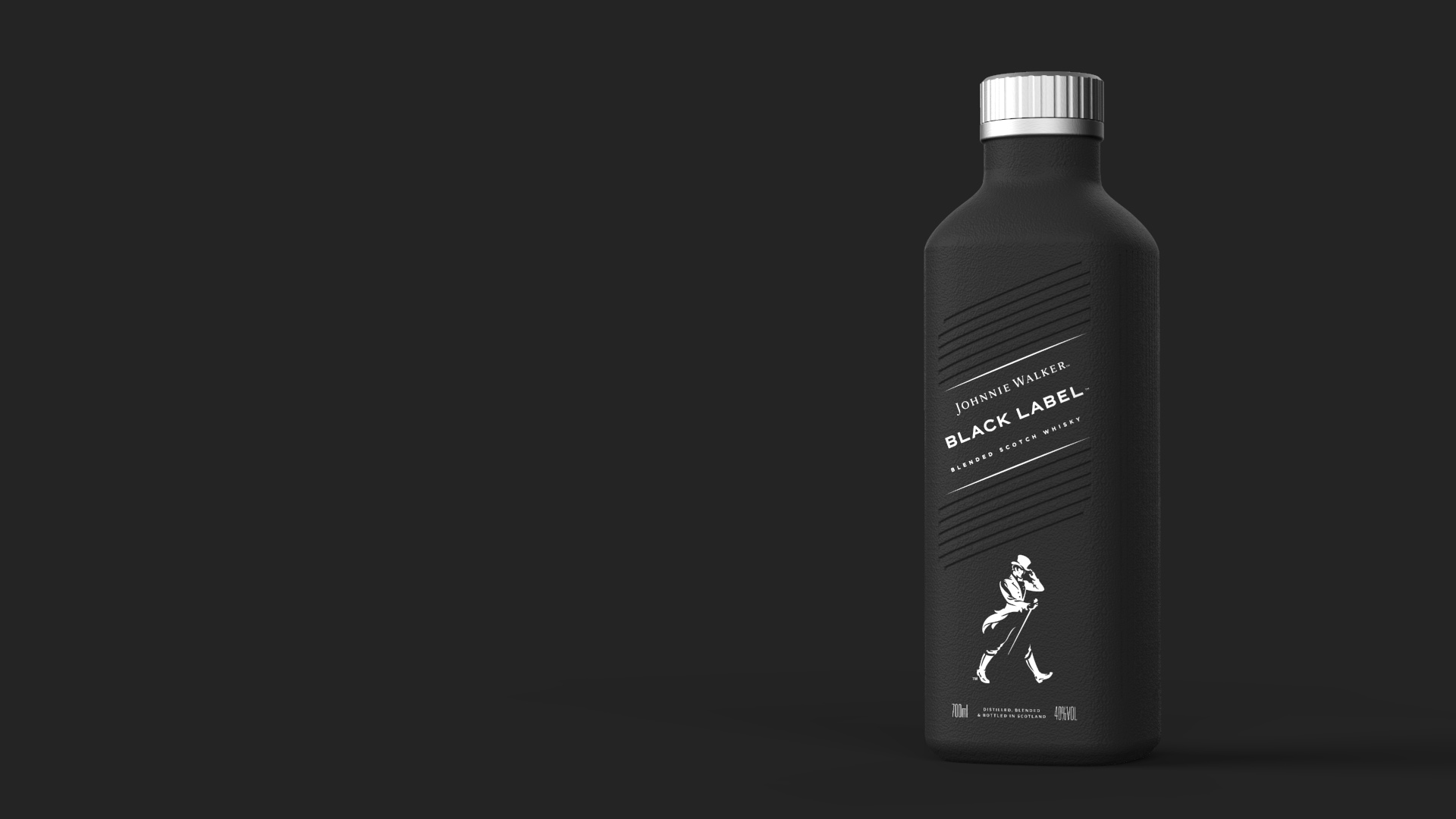Johnnie Walker is to be sold in paper bottles from spring 2021 announced drinks giant Diagio on 13 July 2020, just two weeks after the launch of the paper wine bottle by British company Frugalpac.
Paper bottle technology has finally come of age (see Paper wine bottle - where did it come from?) with some success seen in 2011, 2012 and 2013 when paper bottles were used for milk (sold throughout Asda stores) and then for wine in the UK and the USA. These early attempts disappeared with the failure of the technology to stop the contents spoiling and the demise of the company that made them.
This latest design for Johnnie Walker is slightly different in that it too has an outer shell made of paper pulp but rather than a plastic bag lining, the whisky contents are kept safe by the application of an internal coating sprayed on to the inside of the paper shell. The design has some similarities with the now familiar rectangular shaped Tetra Pak which has a paper outer and a dual lining of plastic and aluminium attached to the inside. These can be recycled if the layers are separated but few UK councils offer this facility at present. The Johnnie Walker bottle has no inner plastic coating and can be dropped straight into domestic recycling bins.
The new paper whisky bottle is to be made by Pulpex, a new company set up with partner companies Unilever and PepsiCo, and is 'the-first-of-its-kind' scalable paper bottle that can used to contain a variety of consumer products.
Which is good news for consumers as the supply of traditional glass bottles has been getting increasingly scarce. With much of the glass being used coming from household and restaurant recycling, glass 'cullet' (small pieces of broken bottles which start the life of new glass containers) has been in short supply since the start of the Covid-19 pandemic when the hospitality industry shut down and this massive source of now empty drinks bottles dried up.
This is part of a continuing trend that has seen the total amount of glass recycled going down. WRAP (The Waste and Resources Action Programme) reports figures for mid-2019 down by 5,000 tonnes on the start of 2019 and down by 30,000 tonnes from mid-2018. Many causes are possible for this downturn: China's announcement to halt the import of recycling (mostly plastic but some glass) in 2018; the change from single kerbside collections to the all-in-one plastic, tin and glass collections has led to lower quality recycled glass which is less attractive to bottle manufacturers; also kerbside recycling has become less frequent (many going from weekly to bi-weekly or monthly collections) as local UK councils cut back on costs.
The glass bottle industry issued warnings at the start of 2020 that there wasn't enough glass around to meet supply as consumer behaviour ditched plastic bottles in favour of glass. Glass has become to much of a success story as it is seen as more recyclable than plastic.
So if there isn't enough glass around then what will fill the gap? Aluminium cans are filling some of the demand, although they too are in short supply as Covid-19 buying behaviour has meant more supermarket buying of soft drinks and beers in cans. Aluminium cans are seen as a lighter weight solution within the shopping and easier to pack and take home. So what's left? How about paper bottles.





